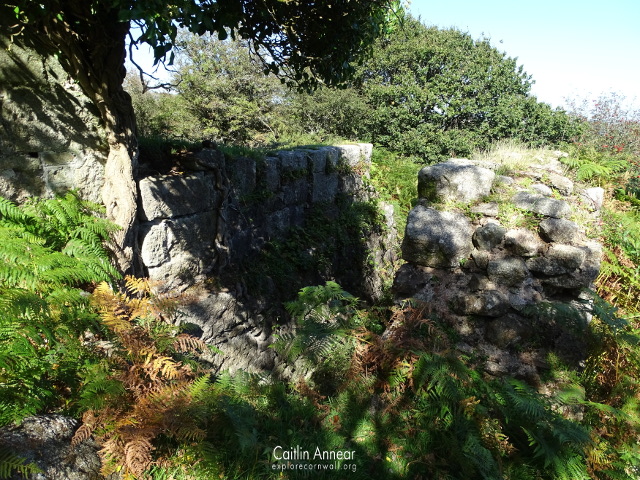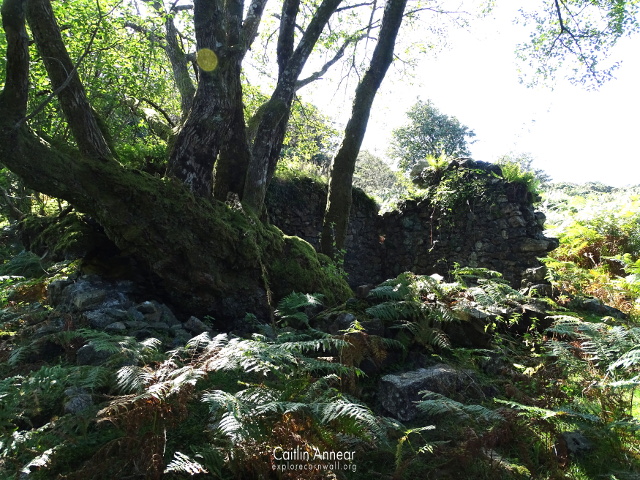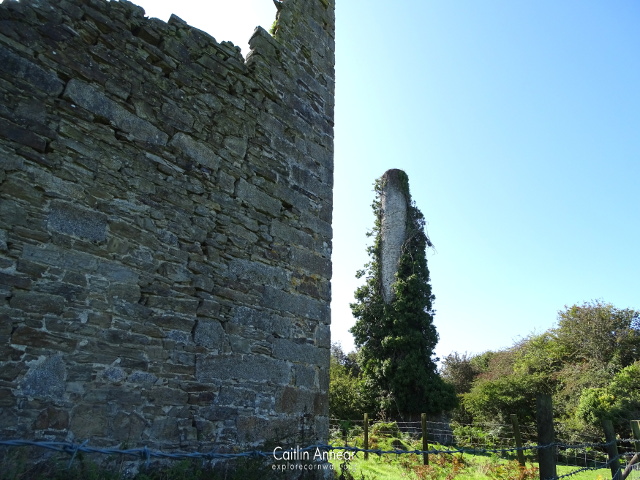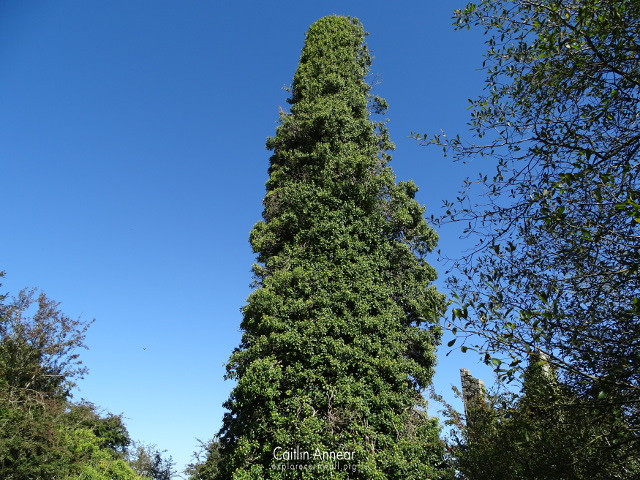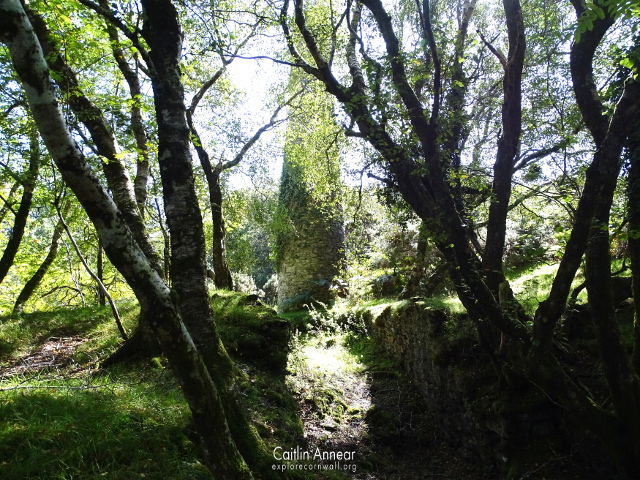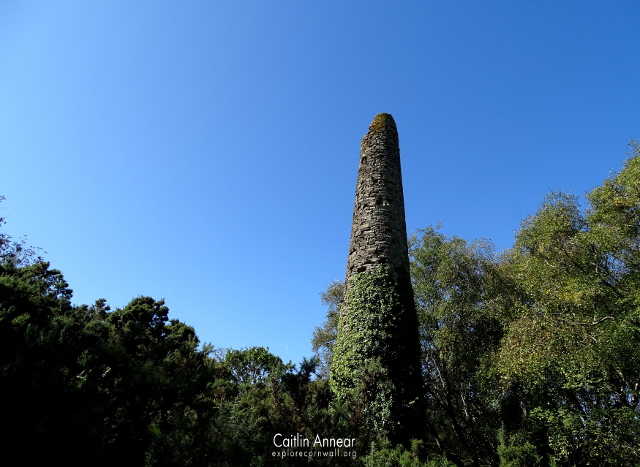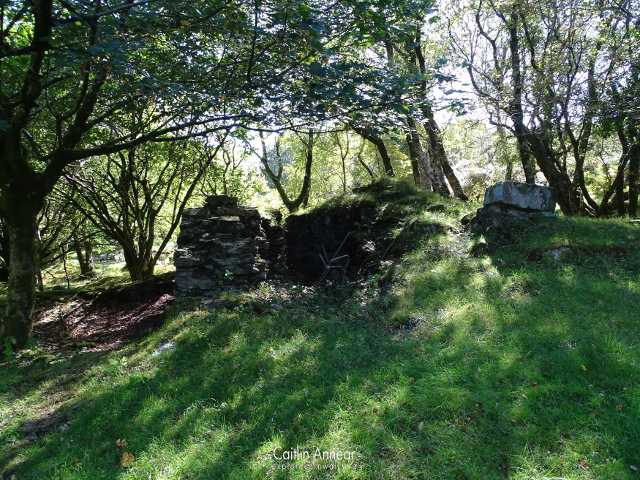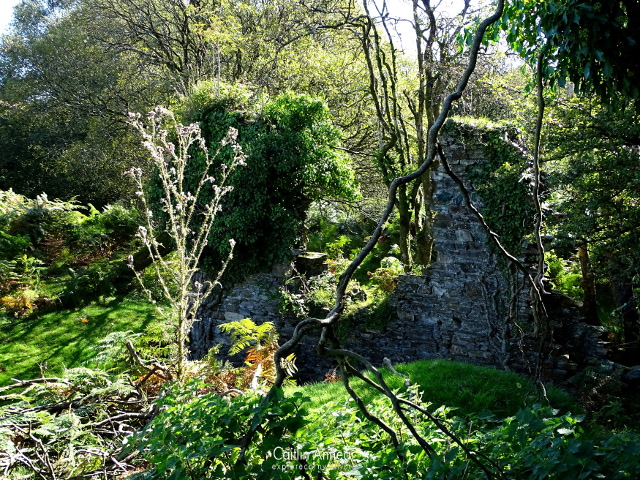The Marke Valley mine is an old mine situated near the village of Minions on Bodmin Moor. The first mention of this venture was in 1828, when a 52′ waterwheel was erected to pump from Old Engine shaft; however this was likely an unsuccessful enterprise as in 1837 a new company was set up. This was the Marke Valley Tin and Copper Mine, who continued to use wheels for water removal for some time.
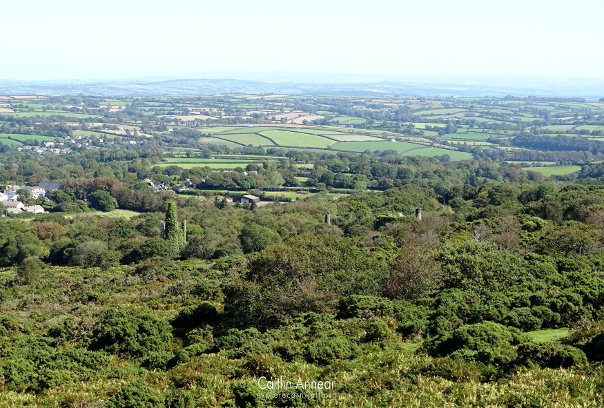
By 1843, two engines were erected on the site, the first being a 36″ pumping engine which worked Old Engine shaft and the other a whim that originally came from Danescombe Mine near Calstock.
Throughout the 40’s and 50’s the mine continued to deepen, reaching 90 fathoms (165m) by 1853, requiring the installation of another pumping engine on Salisbury shaft to help remove the water. This was a 70″ engine built by William West of the St Blazey Foundry in 1855 and was put into action in 1856. It worked here until 1883, and in 1886 was moved to Wheal Jenkin to pump from Bellingham’s shaft. It was also during this period that the Marke Valley Company also worked the neighbouring site, West Rosedown Mine, but as a separate venture.

In 1859, another multipurpose engine was built, at 33″ this not only wound from Salisbury shaft, but also stamped and crushed. Only the remains of its chimney and boiler house can be seen today. By 1865 there was also a 18″ horizontal whim working out of Child’s shaft. However, despite these new additions, the mine remained fairly outdated and lacked a tramroad to help transport its ore.
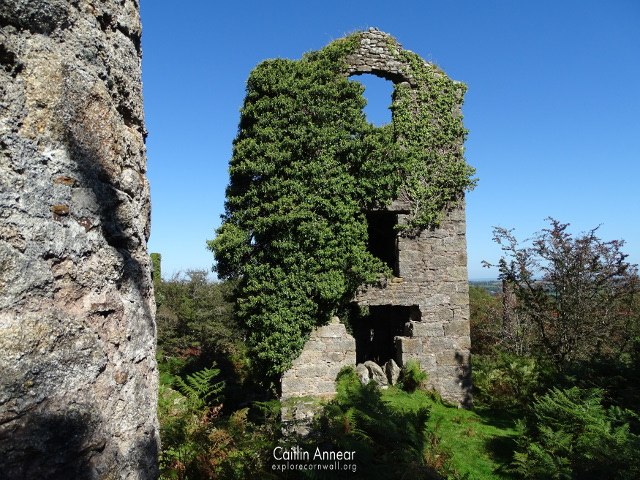
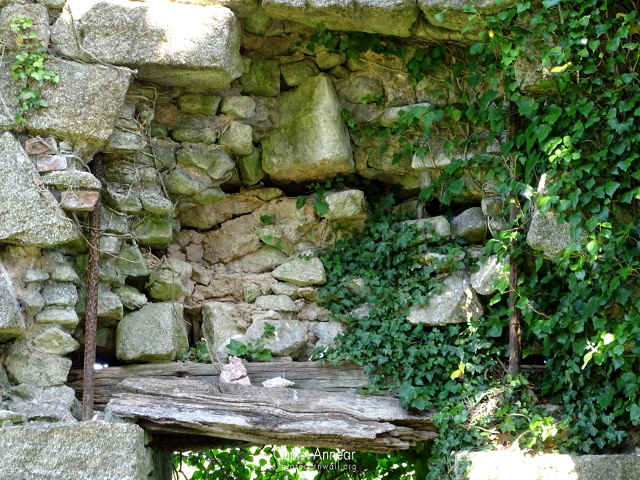
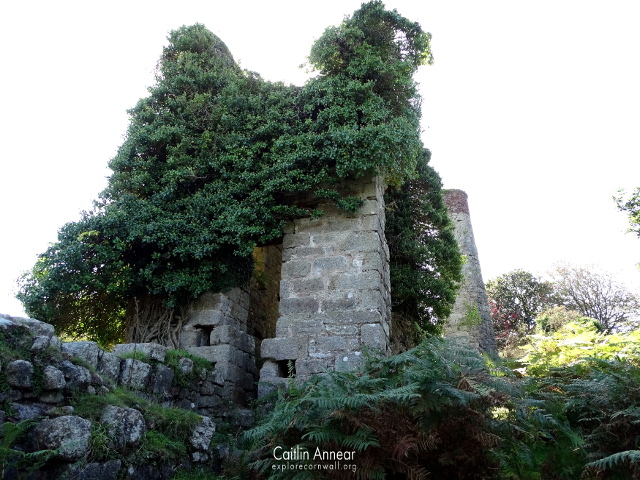
Remains of the 26″ whim engine.
It wasn’t until 1877 that the Liskeard and Caradon Railway extended a branch to reach the mine. Copper output remained poor for several years, but soon picked up, making it the second best producer behind South Caradon.
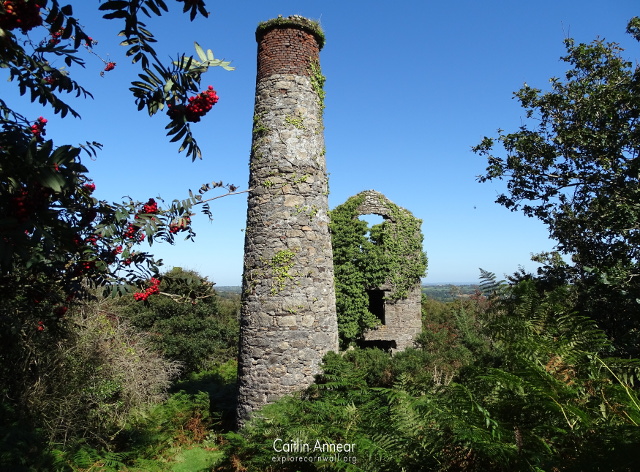
1872 saw the company acquire the Wheal Jenkin sett further west, although this was kept separate for the time being. In 1876 a new 26″ whim was erected to wind from both Salisbury and New shafts.
In 1883, the Marke Valley section of the mine was abandoned and all work moved west into the Wheal Jenkin area, amalgamating with West Rosedown at the same time. Some of the engine’s came too, namely the 70″ and 36″ one, with the 70″ going into Bellingham’s, and the other being refashioned into a whim. Work continued until 1890 when the mine closed, putting all its equipment up for sale.
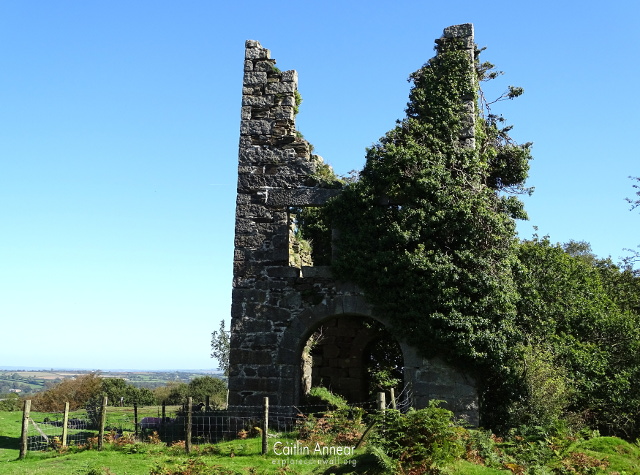
What’s left of the house which once held a 70″ pumping engine.
Between 1907-08, the East Caradon Mine attempted to rework the area, but this was unsuccessful and it was abandoned.
Engine Houses
1828 – 52′ waterwheel
1843 – 36″ pumping engine on Old Engine shaft
1851 – 40′ and 20′ waterwheels installed
1855 – 70″ pumping engine on Salisbury shaft
1859 – 33″ multi-function engine
>1865 – four engines, two waterwheels
?1865 – 18″ horizontal whim from Child’s shaft
1876 – 26″ whim on Salisbury and New shafts
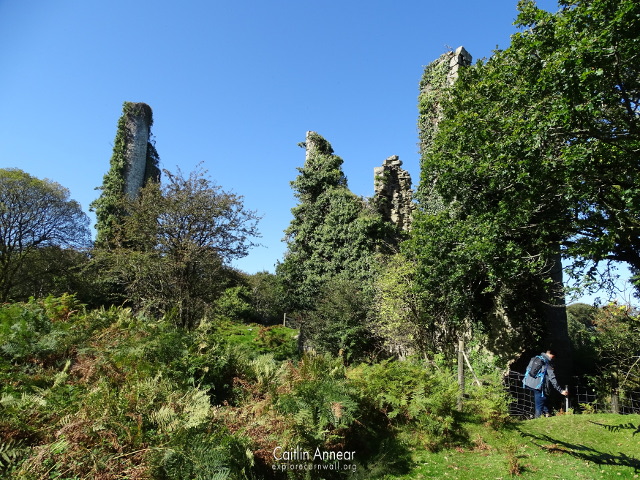
Salisbury’s engine house and chimney, with Scott for scale.
Shafts
Salisbury (148 fathoms/207m), New (20 fathoms/37m), Old Engine (112 fathoms/205m), Child’s (10 fathoms/18m) and Fawcett (100 fathoms/183m).
Lodes
Lodes include Old Sarum, Marke’s, Rosedown, Fisher’s, Sara Maria and Cottage.
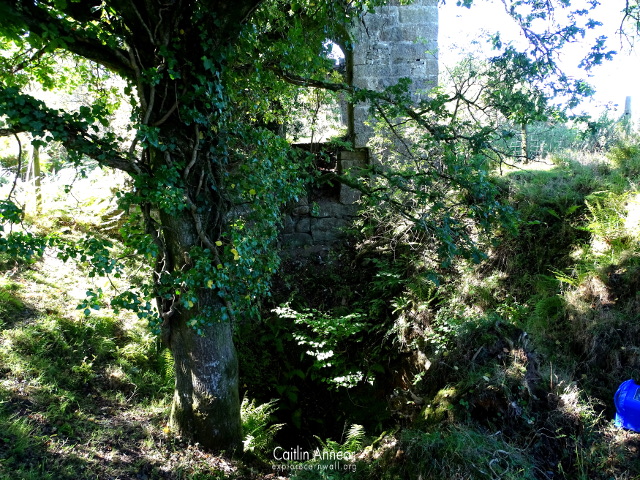
Output
1844-90 – 393 tons black tin and 128,500 tons 5.5% copper.
The whole of the Marke Valley site is under a ‘right to roam’, so can be freely accessed. There are more often than not free range sheep all around the site (and the rest of Caradon Hill), so please be wary of them, especially if you have a dog.
The engine houses, shafts and other buildings themselves are in bad shape, so care should be taken when walking around them. None of the engine houses should be entered as they’re at serious risk of falling down. Salisbury shaft remains open, with a dodgy fence surrounding it, so please stay outside the fence.
Brown, K. and Acton, B. (1997) Exploring Cornish Mines: Volume Three. Truro: Landfall Publications.
Dines, H. G. (1956) The metalliferous mining regions of south-west England. British Geological Survey.
Gossip, J. (2003) Minions Survey. Truro. Available at: http://map.cornwall.gov.uk/reports_event_record/2003/2003R007.pdf (Accessed: 15 January 2020).
Nance, D., Brown, K. and Clarke, T. (2019) A Complete Guide to the Engine Houses of Mid-Cornwall. Lydney: Lightmoor Press.
Sharpe, A. (1989) The Minions Survey Part 1. Truro. Available at: http://map.cornwall.gov.uk/reports_event_record/1989/1989R018.pdf.
Spargo, T. (1864) ‘Eastern District from Lostwithiel to Liskeard’, in The Mines and Cornwall and Devon: Statistics and Observations. London: Vincent & Skeen.

